You know you need to engage in marketing to reach your ideal customers and persuade them to buy.
But marketing can be difficult to understand beyond those basics.
Let’s dive in.
What Is Marketing?
Marketing is all the activities your brand uses to reach your target audience and turn them into customers. And ideally have them make repeat purchases.
It should attract new prospects, educate them about your brand, convince them to buy from you, and build lasting relationships.
At each stage, there are fewer potential customers. Which is why marketing is usually visualized as a funnel. Like this:
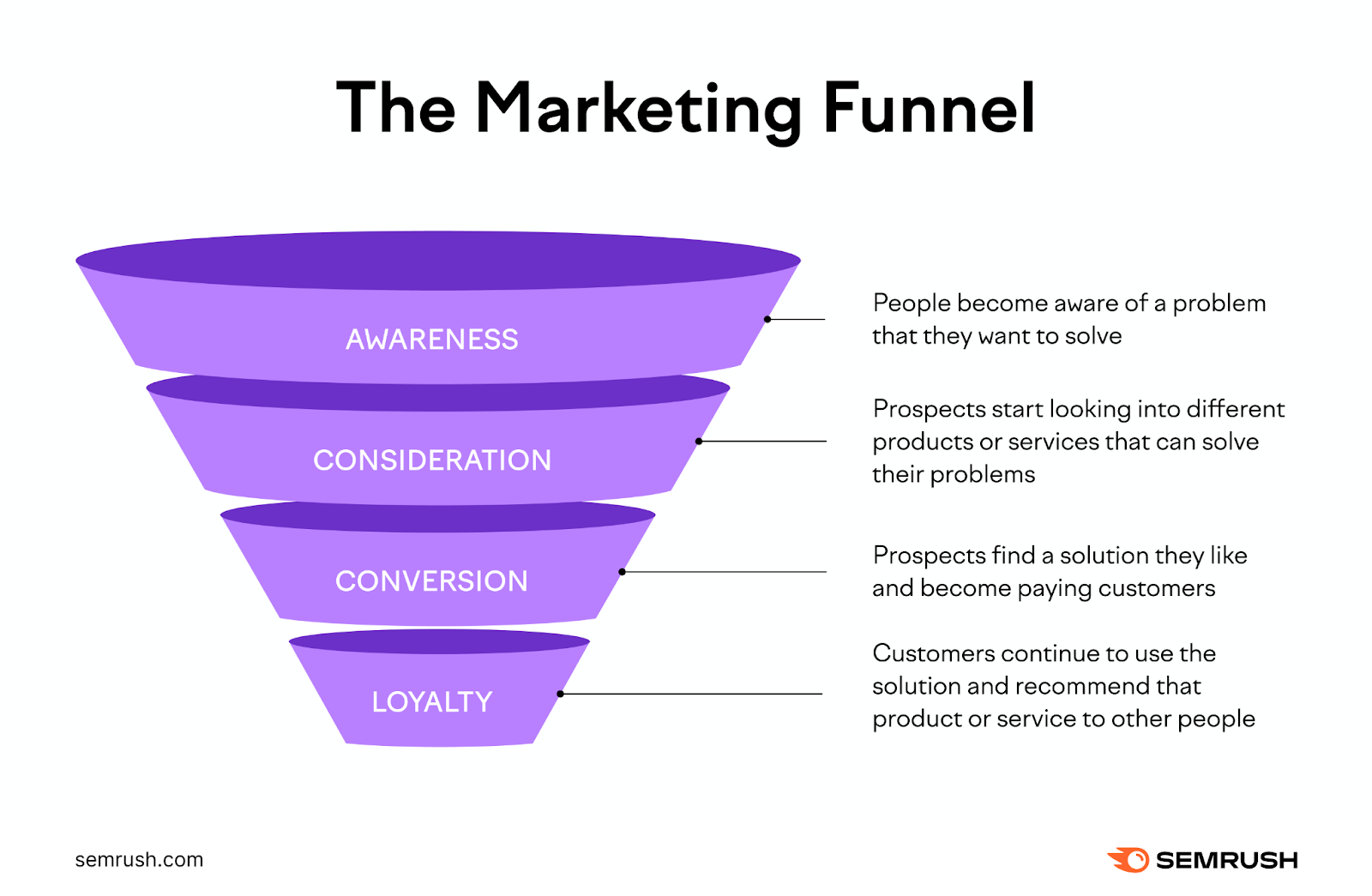
Here are a few examples of ways to engage in marketing:
- Working with social media influencers to make their followers aware of your products or services
- Creating an original research report and promoting it through newsletters, social media posts, and paid search ads
- Publishing a comparison guide that spells out exactly how you differ from your rivals and optimizing it to gain visibility in search engines
- Using email marketing to deploy sequences targeted at leads who’ve engaged with you but haven’t yet become customers
- Sending text messages promoting special deals to existing customers
Done right, these activities can eventually translate to seamless handoffs to your sales team. Or even lead to direct sales.
Marketing vs. Advertising: What’s the Difference?
Marketing in business is everything you do to attract prospects, engage with them, and convert them into customers.
Advertising is a subset of marketing. And involves activities that directly promote your brand, content, or products/services.
In most cases, advertising involves paid tactics. Like this Instagram ad from Benjamin Moore:

While advertising is often used to drive sales, it can also be used to boost brand awareness, promote content, etc.
8 Common Types of Marketing
Now that we’ve defined marketing, here are some of the most common types:
- Traditional marketing: Entails using offline channels like newspaper ads, billboards, and TV commercials. It’s effective for local outreach but offers limited targeting beyond that.
- Digital marketing: Involves online channels like websites, display ads, and social media. It often allows for precise targeting and real-time analytics.
- Content marketing: Focuses on creating valuable content to attract, convert, and retain customers. These pieces can include blog posts, ebooks, and infographics.
- Email marketing: Involves sending targeted messages directly to your audience’s inboxes. It’s great for nurturing leads and maintaining relationships.
- Video marketing: Focuses on using videos to connect with your audience. Product demos and tutorials work especially well in this format.
- Influencer marketing: Relies on collaborating with popular individuals with large followings to promote your products or services. It’s primarily done on social media.
- Affiliate marketing: Involves working with publishers or creators to promote your brand in exchange for a commission. It’s often done through a formal program with terms both parties agree to.
- Search engine optimization (SEO): Centers around making improvements that help your website appear (i.e., “rank”) higher in search results and gain more organic (unpaid) traffic. It can be used for any type of webpage, but it’s especially common to create SEO-focused blog posts.
For many small and new companies, SEO is a great place to start. Because it takes little investment beyond what it takes to create and optimize your website’s content.
It’s especially easy to get started when you create a free Semrush account. Which gives you access to over 55 tools you can use for tasks like keyword research, content ideation, performance tracking and more.
For example, you can use the Keyword Magic Tool to find words and phrases that your ideal customers are actually using to find information and offerings that are related to you.
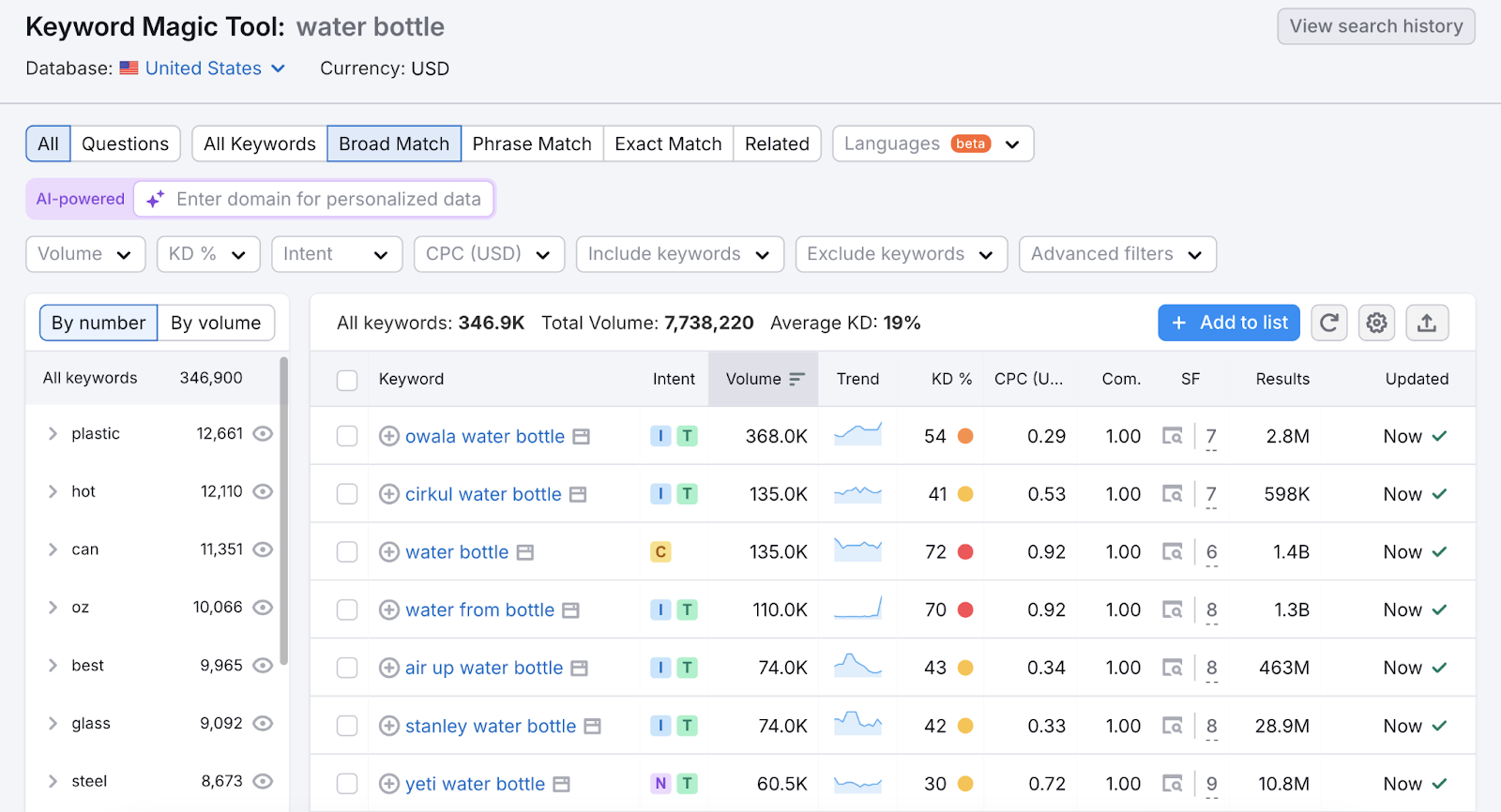
And then create optimized articles to target those keywords using the SEO Writing Assistant.
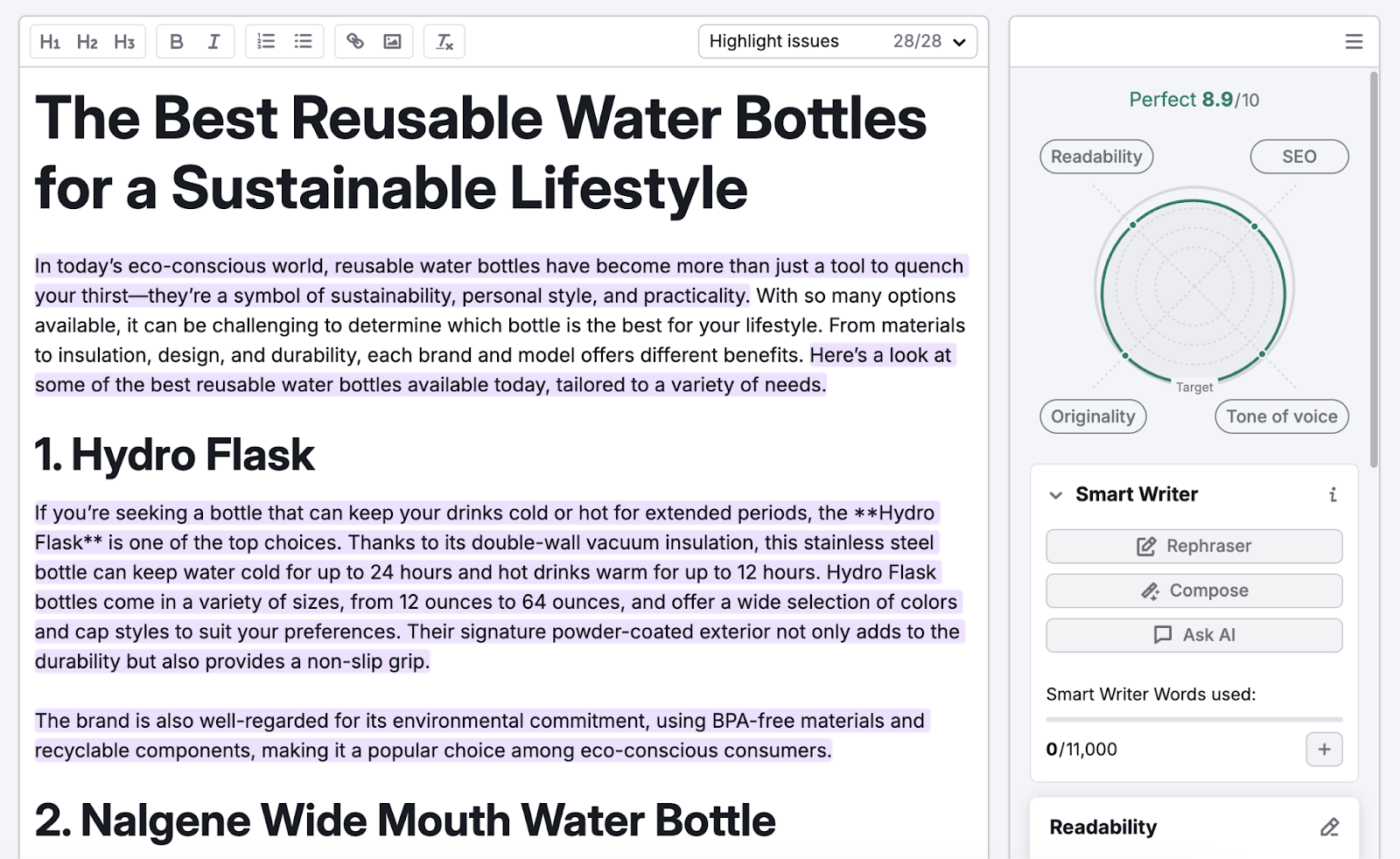
How to Lay the Groundwork for Your Marketing Strategy
Any successful marketing strategy is built off a framework called the marketing mix that includes four elements: product, price, place, and promotion.
They’re commonly known as the four Ps of marketing. Let’s look at each more closely:
Product
This refers to what you’re offering—which can be a product or a service. And considers who you’re trying to reach.
You need to know your features and benefits and how you’re distinct from the competition (i.e., your unique value proposition).
Understanding your product or service thoroughly allows you to align it with your audience’s expectations. And determine the best way to communicate information about it to them.
But before you can do that, you need to uncover details about your audience.
Do this by entering some of your main competitors into One2Target. So you can find your target audience’s demographic, socioeconomic, and behavioral information.
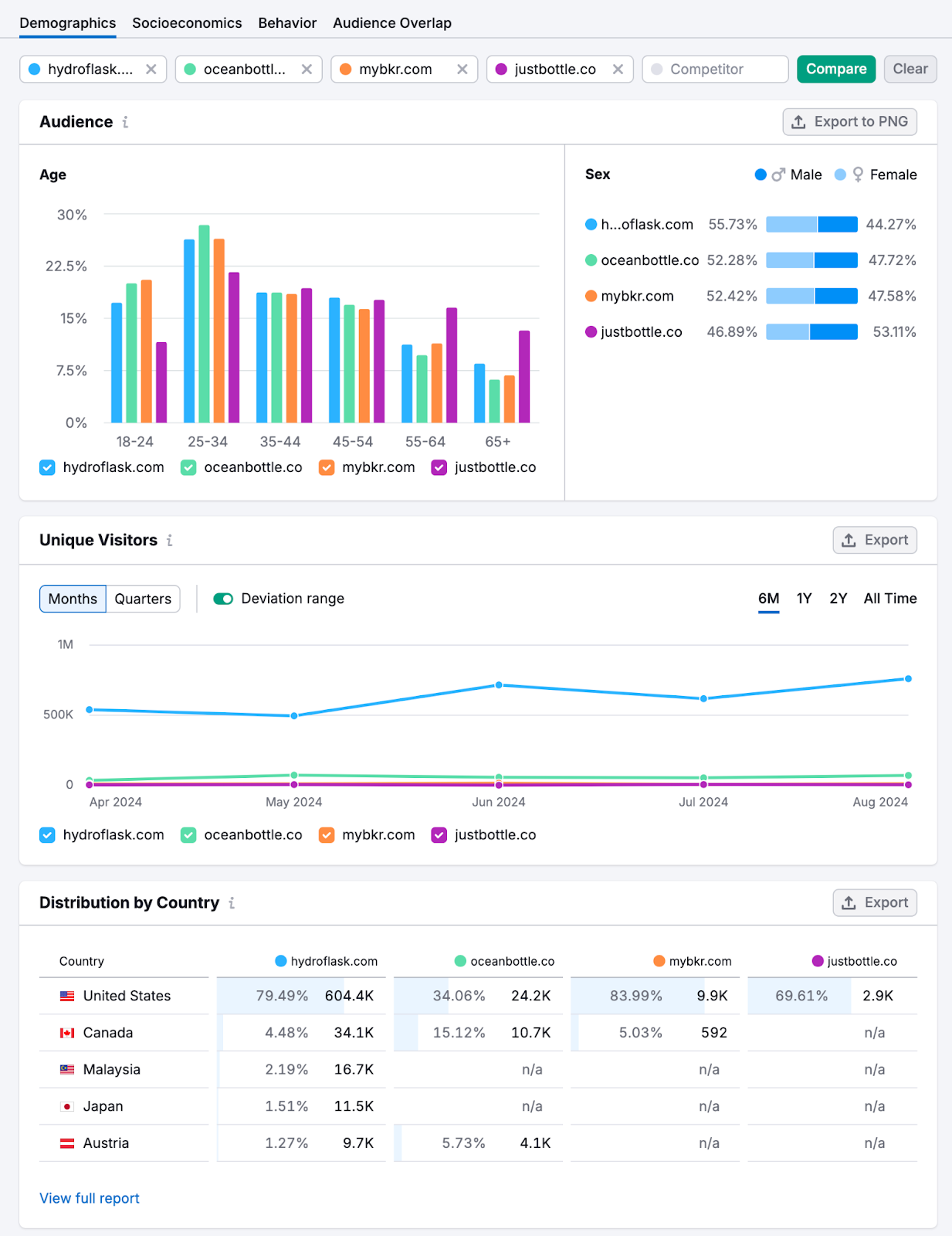
Let’s say you sell eco-friendly water bottles. And see that your audience is primarily people aged 25-34 who work full-time and have families.
With this information, you can create messaging that speaks directly to busy young parents.
Price
Price is what your product or service will cost. And getting this element right helps you avoid customers thinking what you sell is either too expensive or not high in quality.
Plus, you need to set a price that balances out your own costs and allows you to turn a profit.
To determine the proper price, consider what your competitors charge, how much disposable income your audience has, and how you want to position yourself in the market.
For instance, if you’re launching a new sustainable water bottle, you might price it lower than competitors’ products to attract budget-conscious consumers.
And the “Socioeconomics” report in One2Target confirms that focusing on a lower price will likely appeal to this audience.
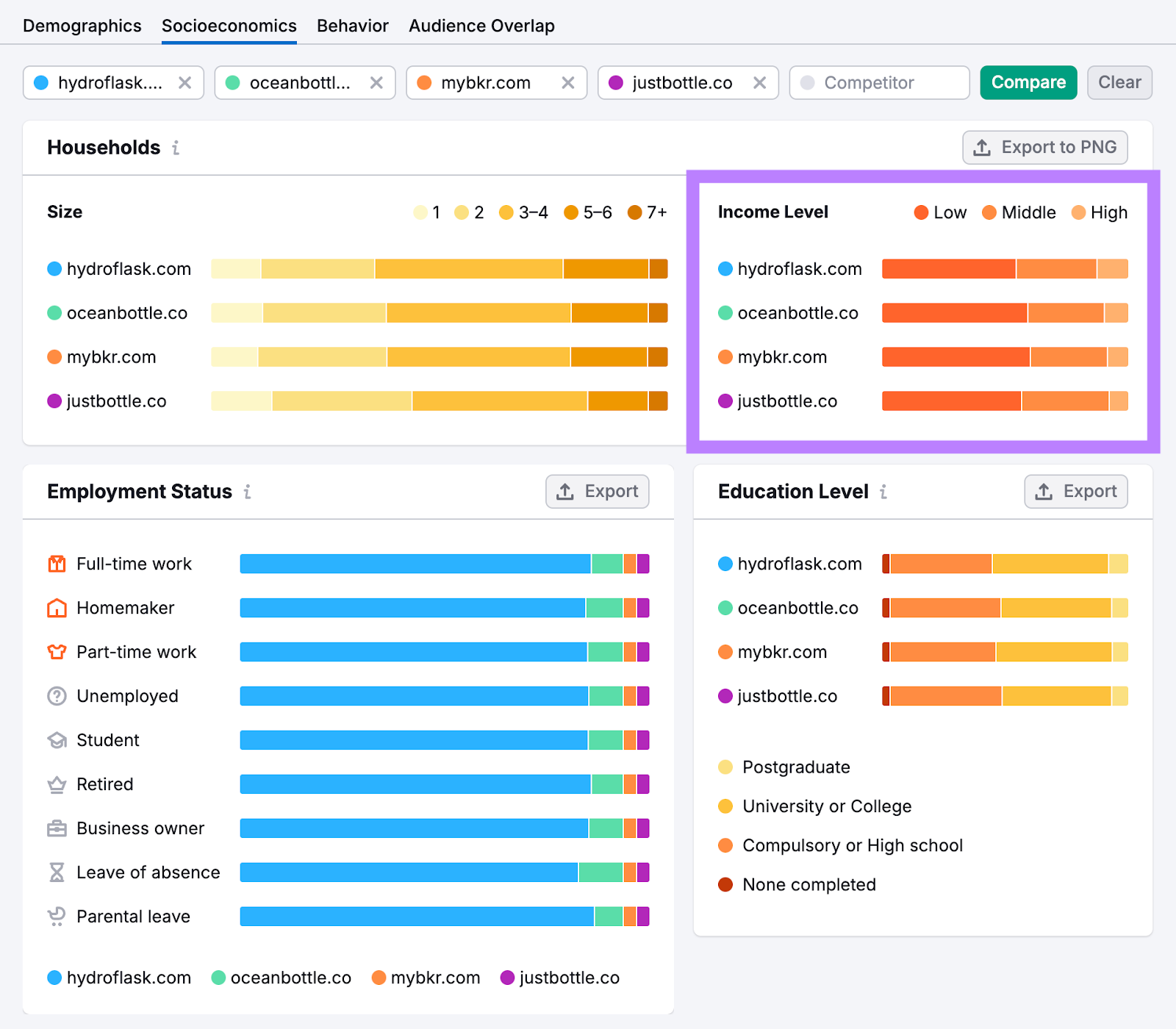
Place
Place refers to where you offer your product or service to customers. And can include both physical locations and online destinations.
Ideally, you want to make your offerings available where your target audience is most likely to shop. Because these places will likely lead to more sales.
You can find out what those are using Market Explorer.
Start on the “Overview” tab, scroll to the “Domain vs Market Dynamics” section, and look at the “Traffic Distribution” module.
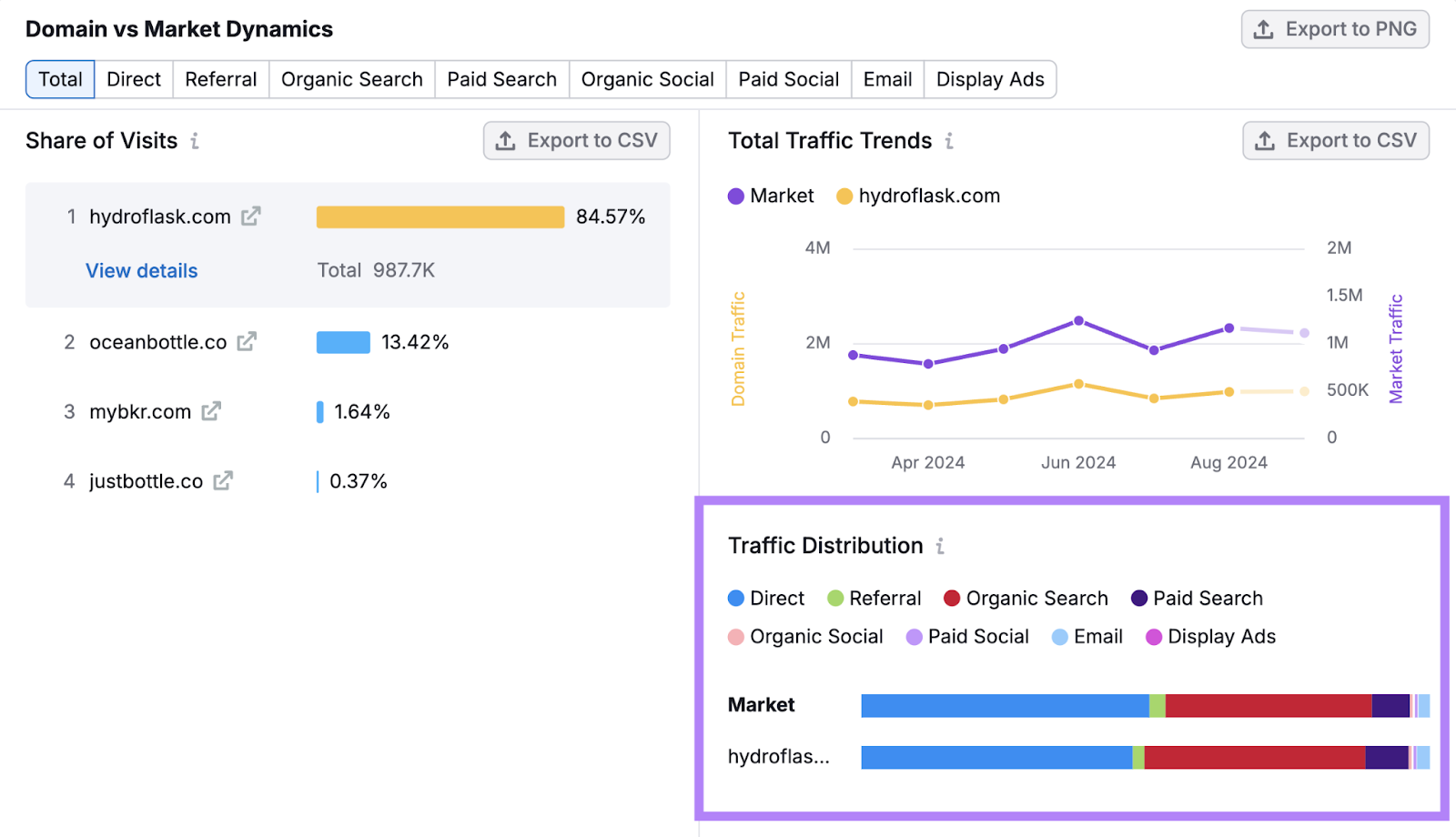
In this case, the vast majority of traffic to sites in this market comes from direct visits and organic search. Which suggests selling on your website is a good choice. If this weren’t the case, focusing on physical stores might work better.
Next, go to the “Audience” tab, scroll down to the “Visited Domains” section, and analyze the list of other sites the audience commonly visits.
Based on what you see here, you might want to partner with a few major retailers like Walmart and Target.
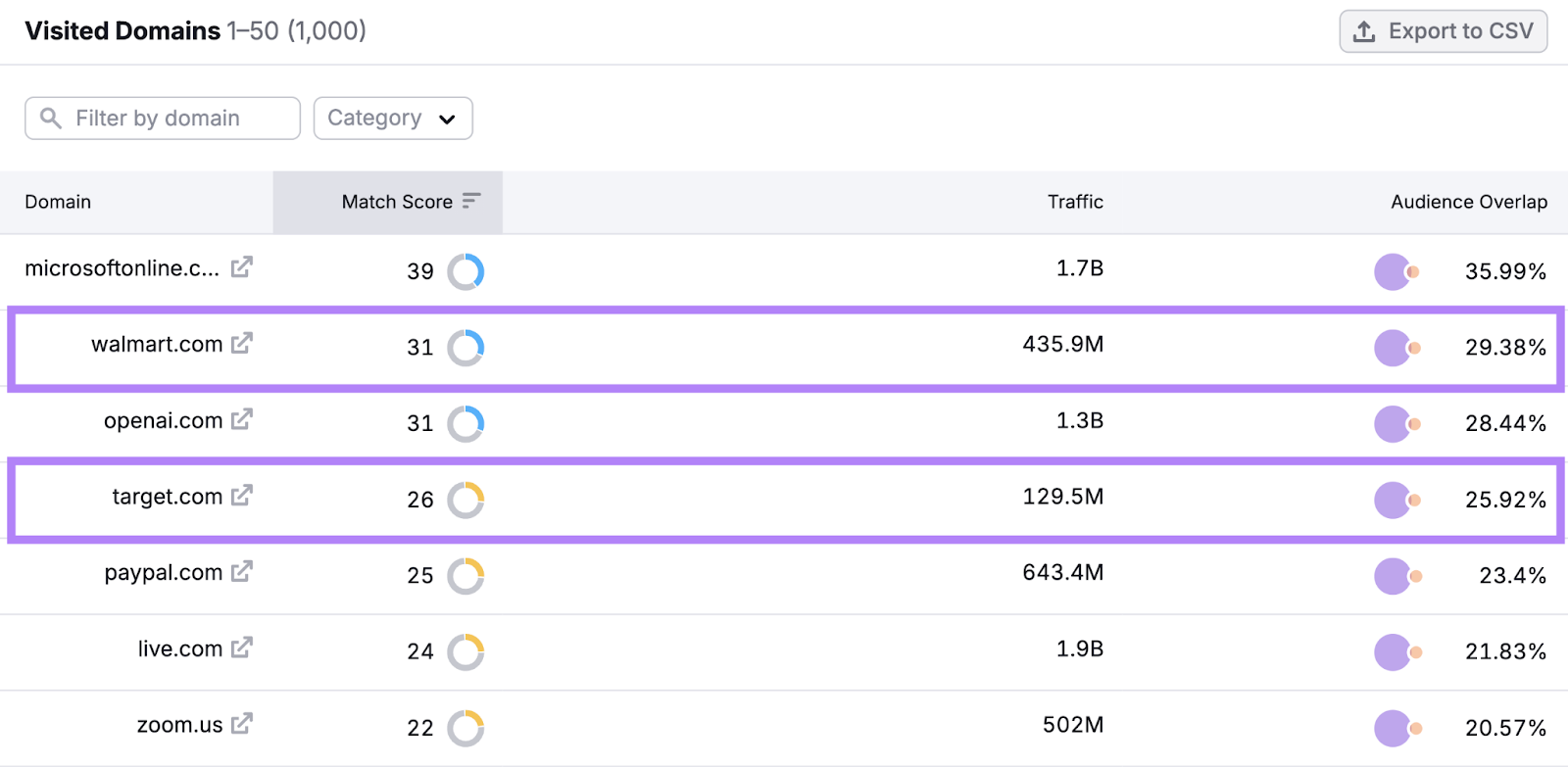
Promotion
Promotion is which marketing tactics (running a sale, publishing quality content, etc.) and channels (social media, paid search, etc.) you’ll use to reach your target audience.
Once you know those details, you can tailor your messaging to align with different campaigns and platforms. To effectively convey your value proposition and persuade prospects to take the next step.
The right tactics and channels depend on your business needs and your audience.
Let’s say your eco-friendly water bottle company has a very small marketing budget. So, you decide to focus on reaching customers via SEO and social media—two of the most affordable options.
How can you choose the best social media platforms?
With One2Target.
The “Behavior” tab shows which social media platforms this audience uses most.
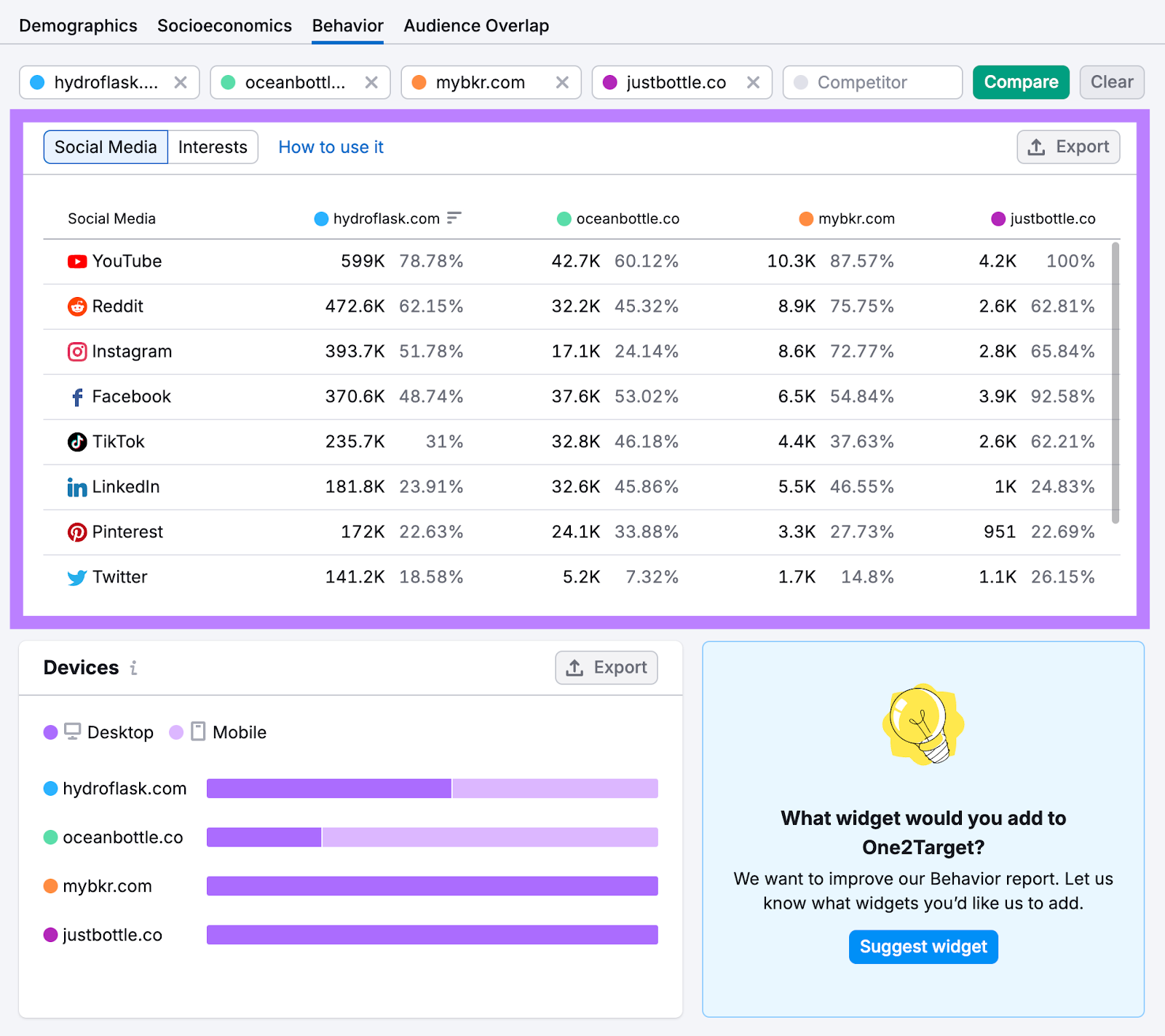
This information shows it’s a good idea to start with YouTube, Facebook, and TikTok. And you can even repurpose longer YouTube videos by turning them into clips to post on Facebook and TikTok.
Start Marketing Your Business
Marketing is essential to attracting customers and driving growth. But it can be difficult to know how to begin.
And you don’t want to waste time and money putting together a guesswork-based strategy that’s unlikely to succeed.
Thankfully, Semrush tools like Market Explorer and One2Target let you get the data you need to craft a well-informed strategy.
Try them today with a .Trends subscription.
